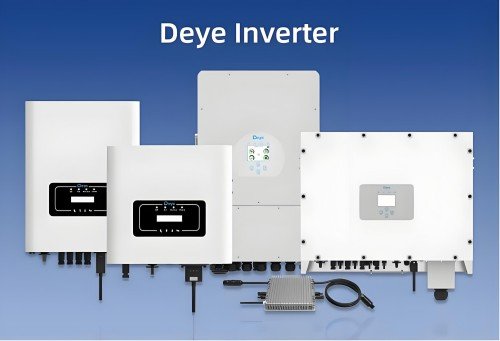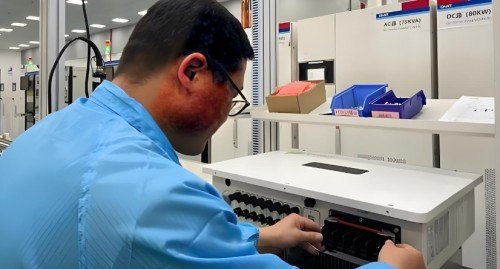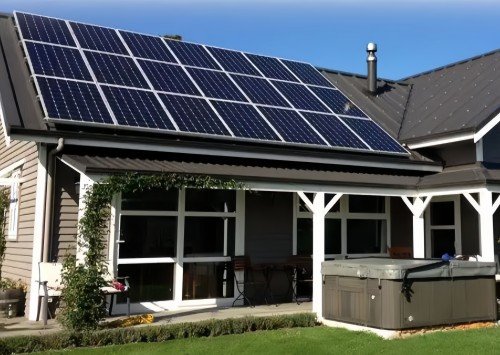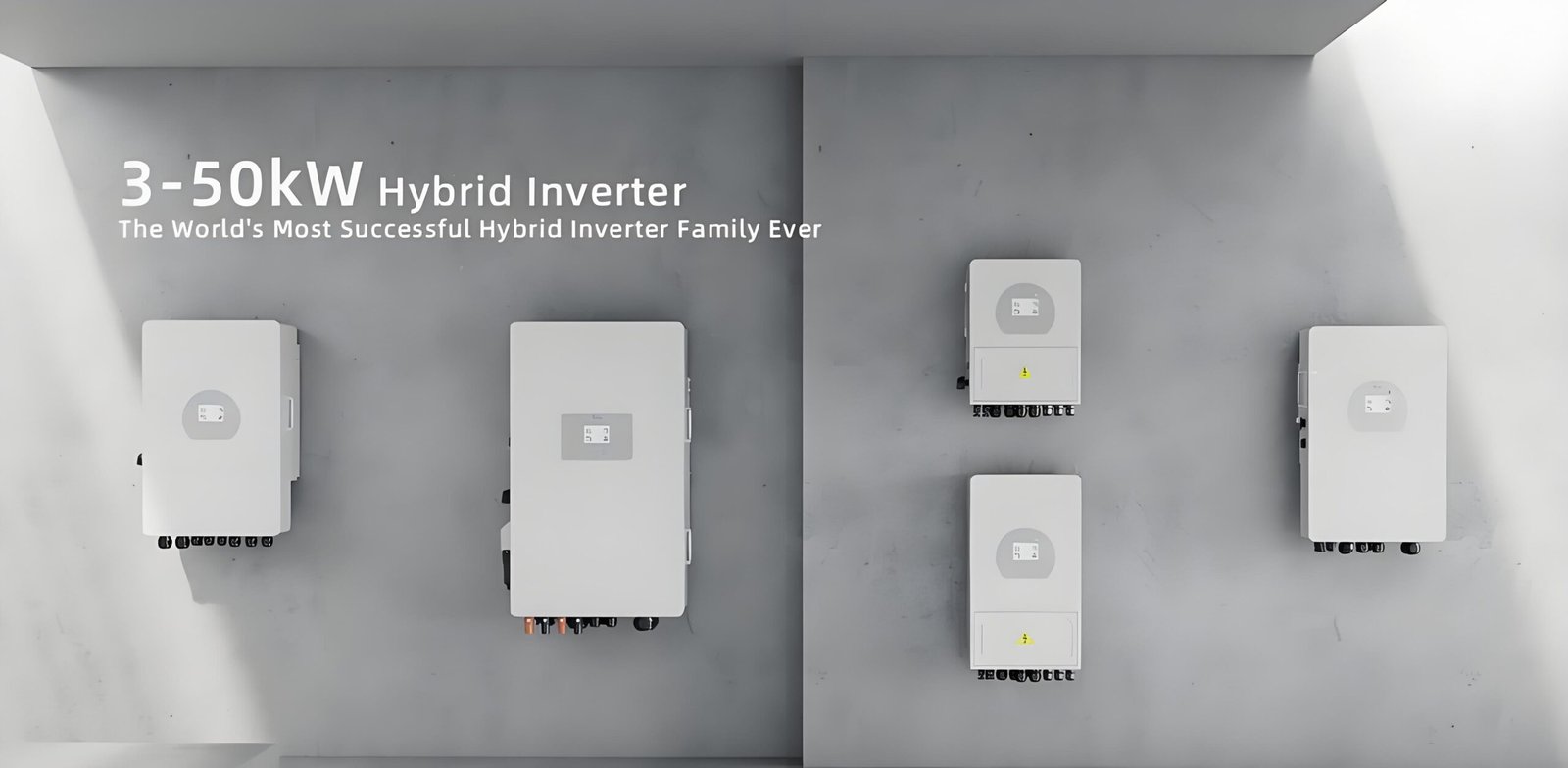Microinverters are compact devices used to convert the DC (direct current) electricity generated by each solar panel into AC (alternating current) electricity. Unlike traditional inverters that handle multiple panels at once, microinverters are installed on each individual panel, offering a decentralized approach to solar energy conversion. This setup has its own set of advantages and disadvantages when compared to regular inverters, which work with entire arrays of panels at once.
What are Microinverters?
Microinverters are small, individual inverters that are installed on each solar panel to convert DC power into AC power. This allows each panel to function independently, which can provide significant benefits, especially in complex installations.

- Power Output per Panel1: Microinverters typically handle up to 300 watts per panel, with higher-end models managing up to 350 watts.
- Efficiency2: Microinverters are usually between 95% and 98% efficient, and some advanced models can reach up to 99% efficiency under ideal conditions.
- Market Adoption: Microinverters make up around 10-15% of the global solar inverter market but are expected to see increased adoption due to their advantages in maximizing system performance in shaded or complex roof configurations.
Key Data on Microinverters:
- Average Power Output per Panel: Around 300 watts per panel.
- Efficiency: Typically 95%-98% with some high-end models reaching 99%.
- Market Share: Microinverters hold about 10%-15% of the global inverter market, with projections for significant growth in residential solar installations.
Advantages of Microinverters
Microinverters have several benefits that make them an attractive option, especially for specific use cases. Here are some of the key advantages:

- Increased Energy Yield: Microinverters operate at the panel level, which means each solar panel works independently. This is particularly advantageous for panels with partial shading, dirt, or damage. Studies suggest microinverter systems can provide up to 25% more energy than traditional string inverter systems under non-ideal conditions.
- Better Performance in Shaded Areas: If your solar array is partially shaded due to trees, buildings, or other obstructions, microinverters help each panel work independently. This prevents shading on one panel from affecting the performance of the entire array, a common issue with traditional inverters.
- Real-Time Monitoring: Microinverters allow for panel-level monitoring, meaning you can track the performance of each individual panel. This provides greater transparency and makes it easier to detect and address issues like panel malfunction.
- Example: Enphase Energy, one of the most popular microinverter brands, reports that customers using their system can detect issues up to 30% faster compared to traditional systems that only provide system-wide performance monitoring.
- Safety and Reliability: Microinverters reduce the risk of high-voltage DC running through your system. By converting DC to AC at the panel level, microinverters eliminate the risk of DC arc faults, making your system safer.
Example Data:
- Energy Production Increase: A study by Enphase Energy showed that systems using microinverters could see 5% to 25% more energy production compared to string inverters, especially when the panels are exposed to varying sunlight or partial shading.
- Cost per Panel: The average price of a microinverter is approximately $120 to $150 per unit, depending on the model and manufacturer.
Disadvantages of Microinverters
While microinverters offer many advantages, they also come with some challenges:

- Higher Upfront Cost: Microinverters are typically more expensive than traditional inverters, as you need one microinverter for each solar panel. The price of a microinverter system can be $0.20 to $0.30 per watt, whereas traditional string inverters generally cost about $0.10 per watt.
- More Complex Installation: Installing microinverters is often more labor-intensive than installing a single string inverter, as each panel needs to be connected to an individual inverter. This could increase installation time and labor costs.
- Maintenance Costs: While each microinverter is designed to operate independently, replacing a faulty microinverter can be more expensive than repairing a traditional string inverter.
- Size and Aesthetics: Microinverters are installed on the back of each solar panel, which may slightly increase the bulk of the system. Some homeowners may find this less aesthetically pleasing.
Which One Should You Choose?
When deciding whether to choose microinverters or traditional inverters, you need to consider factors like the complexity of your installation, budget, and the conditions under which your solar system will operate. Here are some key considerations:

-
Microinverters are ideal for:
- Shaded Roofs: If you have a roof with shading issues, microinverters will help each panel work independently, improving overall system efficiency.
- Higher Budget Flexibility: If you are willing to invest more upfront for better performance and monitoring, microinverters might be the best choice.
- Smaller Installations or Future Expansion: If you're installing a small system or planning to expand in the future, microinverters offer great flexibility since you can add more panels without upgrading your inverter.
-
Traditional inverters are better for:
- Unshaded Roofs: If your roof is free from shading and has a simple, straightforward layout, a traditional string inverter may be more cost-effective.
- Larger Budgets: If you need a more affordable option, traditional inverters are less expensive, making them a suitable choice for larger systems.
- Larger, Simpler Installations: If your installation is not complicated and has a large, consistent exposure to sunlight, traditional inverters are typically the better choice.
Microinverters in Practice
Microinverters are particularly well-suited for residential homes that have complex roof layouts or are subject to shading issues. Here are some practical examples and data points:
system will operate. Here are some key considerations:**

- Home Energy Consumption: Microinverters are ideal for homes that consume 3 kW to 8 kW of electricity per day, making them a good fit for average homes with moderate energy consumption.
- Lifespan: Microinverters typically have a lifespan of 5 to 15 years**.
- Cost of System: The total cost of a solar installation with microinverters for an average home (around 6 kW system) can range from $12,000 to $18,000, depending on the quality of the components and installation fees.
- Return on Investment: Microinverters can offer a faster ROI (Return on Investment) in homes with shaded roofs or frequent system expansions, with some homeowners reporting a 3-5 year payback period compared to 6-8 years for systems with traditional string inverters.
Conclusion
Microinverters are a great solution for residential solar installations that face shading issues or need frequent expansion. They offer greater flexibility, safety, and performance optimization at the panel level. However, they come with a higher initial cost and more complex installation. If you have a roof with shading problems or anticipate adding more panels in the future, microinverters could be a better long-term investment. On the other hand, if your system is straightforward with minimal shading, traditional string inverters may offer a more cost-effective option.




